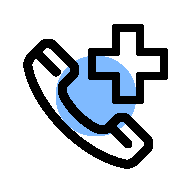Mustache hair transplant
Mustache hair transplant is a highly specialized surgical procedure to help restore or increase hair growth in the mustache area. For many people, mustache hair does not always grow evenly and men who try to release it may find that their hair grows unevenly and in patches, and this is one of the biggest Reasons why hair transplantation is more popular these days, and just like other types of hair transplant techniques that allow you to use your hair to fill in thinner areas of the head, mustache hair transplants use a similar technique to thicken and fill in patchy areas of facial hair, and the operazi site provides a service in installments operations for patients.
What happens during the mustache hair transplant?
Mustache transplantation or facial hair transplantation is a commonly performed surgical procedure designed to transplant scalp hair into areas of the face that lack density and fullness.
● The most important part of the procedure is the design of the mustache area.
● The doctor will listen to your goals and together they will come up with a design for this area.
● A mustache transplant is an in-clinic procedure, and you'll still be comfortable with medications to help you relax and control any pain.
● A strip of hair is removed from the back of your scalp and carefully cut into individual hair pieces, which are then meticulously placed in the designated area.
● Positioning in the correct direction and angle is critical to achieving natural results and with the goal of achieving the most natural looking results.
See also: FUE Hair Transplant
What does the recovery period look like after a mustache hair transplant?
● After surgery, mild redness and crusting of the hair transplant site can be expected, and this usually goes away after a few days to a week.
● Depending on your comfort level, many patients can return to work and social activity after a day or two.
● However, we advise against certain activities such as lifting heavy objects and smoking.
● Since hair follicles use scalp hair, these grafts will continue to grow in this way and will need to be clipped.
● It allows each hair follicle to be placed not only at the right depth, but also under the correct angle and direction, as each area of the face (mustache, sideburns, beard, etc.) requires a different angle and direction to mimic the natural look of facial hair.
How can hair follicles be harvested?
Hair follicles can be harvested in two ways:
1- The first technique for long hair transplantation (FUL):
● Without shaving, but with the removal of a strip of scalp of a few centimeters on the back of the scalp, depending on the number of hair transplants needed.
● Once the strip is taken, it is cut into 1 or 2 hair grafts and the sampling area is completely closed to leave an almost invisible scar.
● It is preferable to use the FUL technique because it allows to choose the direction of each hair follicle precisely.
2- Second Hair Transplant (FUE):
● After shaving, samples are taken from the follicles by extracting the follicles and this is done on the back of the head.
● FUE hair transplantation by picking out hair after previous shaving or transplanting long, full hair by cutting hair under a microscope
● Follicular unit grafts are taken one by one using a hollow 0.8 mm needle.
● This method has the advantage that it leaves small scars that are almost invisible to the naked eye, but any hair removed from the back will be permanently lost.
Whatever sampling method used (FUL or FUE), the implantation technique can be performed either via the implant pen or by inserting the implants one by one using microsurgical forceps after needle prick.
The surgical procedure for mustache hair transplant
Medical assessment before beard transplantation Where the medical examination before the procedure and the cause of mustache baldness must determine, a preliminary drawing of the mustache will be made as required for correction in agreement with the patient and the number of mustache transplants will be calculated.
● The semi-painful procedure is performed under local anesthesia after applying an anesthetic cream.
● Drawing in a pencil with the patient allows the patient to determine the area of the mustache to be treated and the area of hair to be sampled.
● The first part consists of preparing the hair follicles with either the FUE technique or the FUL technique.
● The second part is the implantation of these implants, with fine needles, at the level of the mustache, taking into account the direction and the most natural aesthetic appearance.
Postoperative care
● No bandage or bandage will be applied to the mustache.
● Face washing and cleansing can be done the day after the operation.
● The examination will be scheduled for 15 days after the procedure.
● Mustache edema can sometimes appear within 24 to 48 hours after surgery, and it will take 2 to 4 days for it to subside.
● The newly transplanted hair stalks will fall out and the transplanted follicles will stop growing during the first three months after the procedure.
● The new mustache hair will start to regrow around the third month after the procedure.
● Consultations with the medical team will be scheduled for 15 days after the procedure and six months after the surgery.
● A delay of 12 months is needed to analyze the final result of the procedure.
● Depending on the situation, two to three procedures (spaced at least 6 months apart) may be necessary to obtain adequate moustache density.
See also: Beard hair transplant
Ideal Candidates for Mustache Hair Transplant
Mustache transplantation is indicated for those who have thin hair for genetic reasons, or due to injury, burns, or scarring and all of the above are already considered one of the main causes of mustache thinning, and in many cases, most of which are young people, and scattered facial hair can be observed, even if it is not There is a genetic factor and candidates for this procedure include:
● Complete absence of a beard or moustache.
● The beard lacks density.
● Change the shape of the mustache.
● Correction of density inequality or heterogeneous moustache.
● Scarring in the beard or mustache.
Advanced Mustache Hair Transplant by FUE
● The manner in which mustache hair transplantation is performed, must be carefully designed.
● More specifically, the doctor will examine a series of criteria, such as the age of the patient who wants to undergo the FUE procedure, the density of hair at the donor site on the head, facial features, and the result the patient may want.
● The doctor must also determine the number of follicles to be transplanted, based on the clinical picture of the patient and the desired density.
Stages of mustache hair transplantation using the FUE method
● The doctor identifies and maps the donor site from which the hair follicles will be taken and this should be a rich site that does not tend to loosen.
● The specialist applies local anesthesia and removes hair follicles one by one with a special device.
● The follicles are kept in a suitable cool and humid environment, until the transplant procedure is performed.
● The doctor plans the area where the mustache transplant will be performed.
● Finally, he places the follicles with the advanced FUE technique.
.







00 التعليقات